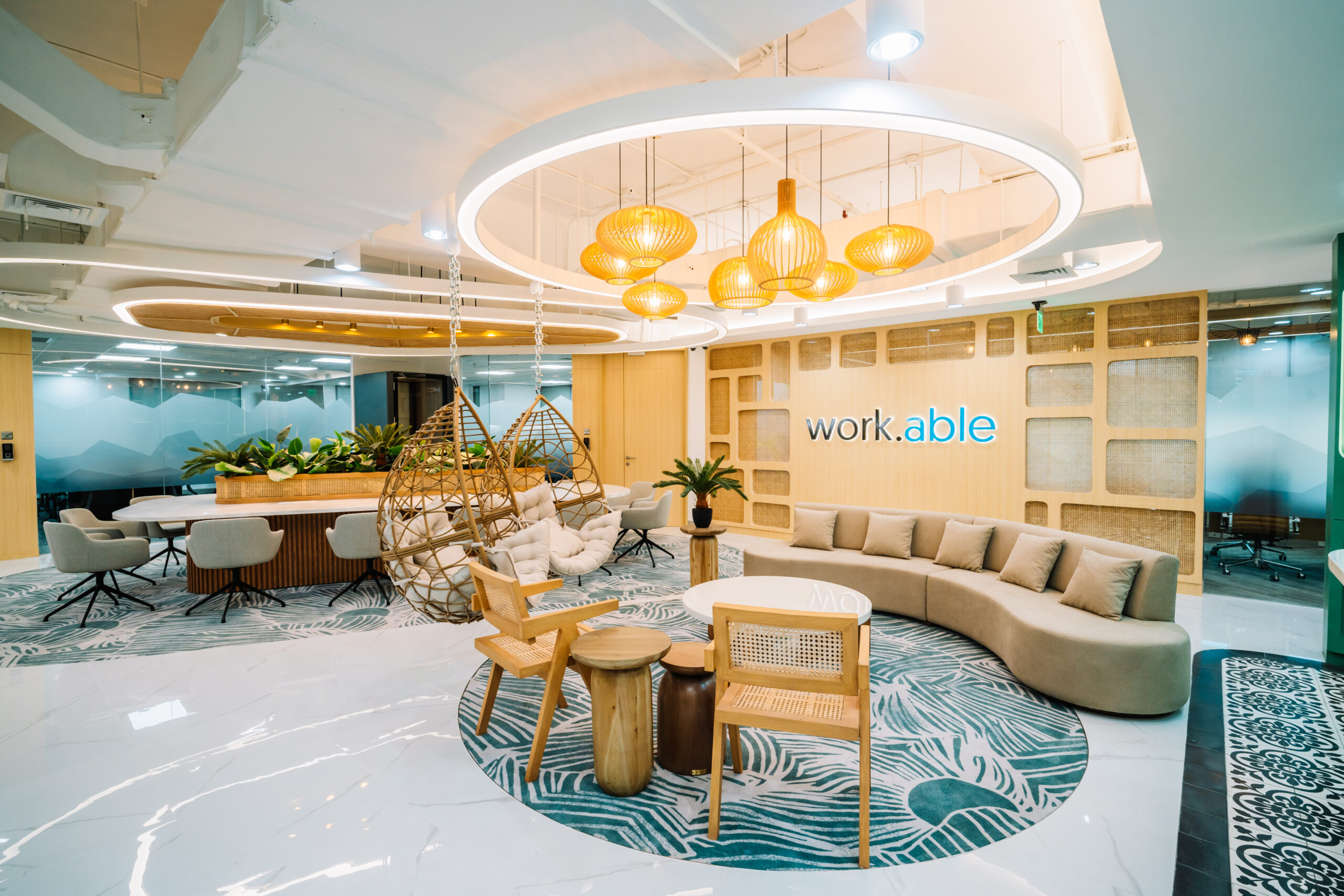Office Refurbishment vs Office Relocation – What’s the Difference?
Before we get into the many aspects of office relocation and refurbishment, let us understand how they are different and how they impact employee well-being and office productivity. If you have overcrowded spaces in some pockets of the office while the other places are secluded then space utilisation is the solution. However, if you want to expand the space and the building does not offer that, it’s best to relocate. On average, an office should have 110 sq ft of space per employee. When you refurbish the office space, you make changes in the design to meet your current business needs and probable future workspace expansion. Office refurbishments include reconfiguring furniture or going for office space utilisation changes that make way for a flexible workplace, enhancing collaboration and productivity of the employees. Office renovation costs are less expensive and time-consuming than relocating to a new office although it might cause disruptions in work. On the contrary, office relocation means you are moving offices to an entirely new space where you will build a workplace from scratch, ensuring all the workspace needs are met. Office relocation costs are heavy as the entire unit including the people and equipment will move into a new place. While this provides the opportunity to rethink your business and workspace strategies and align them according to the employee’s needs, it is also time-consuming. However, unlike refurbishment, the business operations might not be interrupted here that much as your employees can work from the old office as you slowly migrate to the new office.Space Utilisation
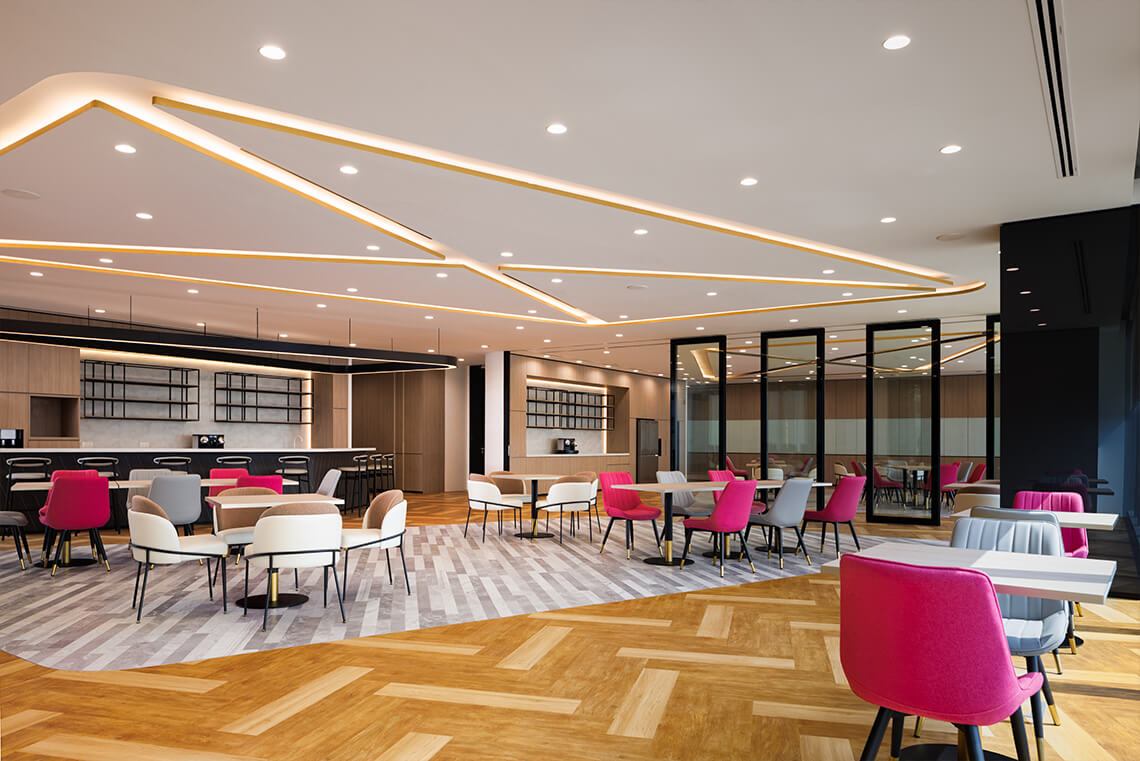 Jera
Office space utilisation is the primary aspect to consider when you are trying to refurbish or relocate. If the current office space is very overcrowded or it is too large then a mere office redesign cannot solve the problem. In such cases, the office needs to relocate to a space which fits the workspace needs. However, you need not be moving offices just because of overcrowding as data from most businesses show that 30-50% of the office real estate space remains underutilised.
For optimal space utilisation businesses must understand both quality and quantity are the key, especially quality. You can refurbish the office to include more collaborative and hybrid workspaces, enhancing employee productivity. If the collaboration needs of the workplace cannot be fulfilled by the current building space then you can consider relocating.
The bottom line in space utilisation is that you can meet your business needs and boost your office productivity within your current space most of the time. In such cases look for options like glass partitions, flexible workstations, and modular furniture which can be easily reconfigured. If that does not suffice then you have no other choice but to relocate.
Jera
Office space utilisation is the primary aspect to consider when you are trying to refurbish or relocate. If the current office space is very overcrowded or it is too large then a mere office redesign cannot solve the problem. In such cases, the office needs to relocate to a space which fits the workspace needs. However, you need not be moving offices just because of overcrowding as data from most businesses show that 30-50% of the office real estate space remains underutilised.
For optimal space utilisation businesses must understand both quality and quantity are the key, especially quality. You can refurbish the office to include more collaborative and hybrid workspaces, enhancing employee productivity. If the collaboration needs of the workplace cannot be fulfilled by the current building space then you can consider relocating.
The bottom line in space utilisation is that you can meet your business needs and boost your office productivity within your current space most of the time. In such cases look for options like glass partitions, flexible workstations, and modular furniture which can be easily reconfigured. If that does not suffice then you have no other choice but to relocate.
Office Disruptions
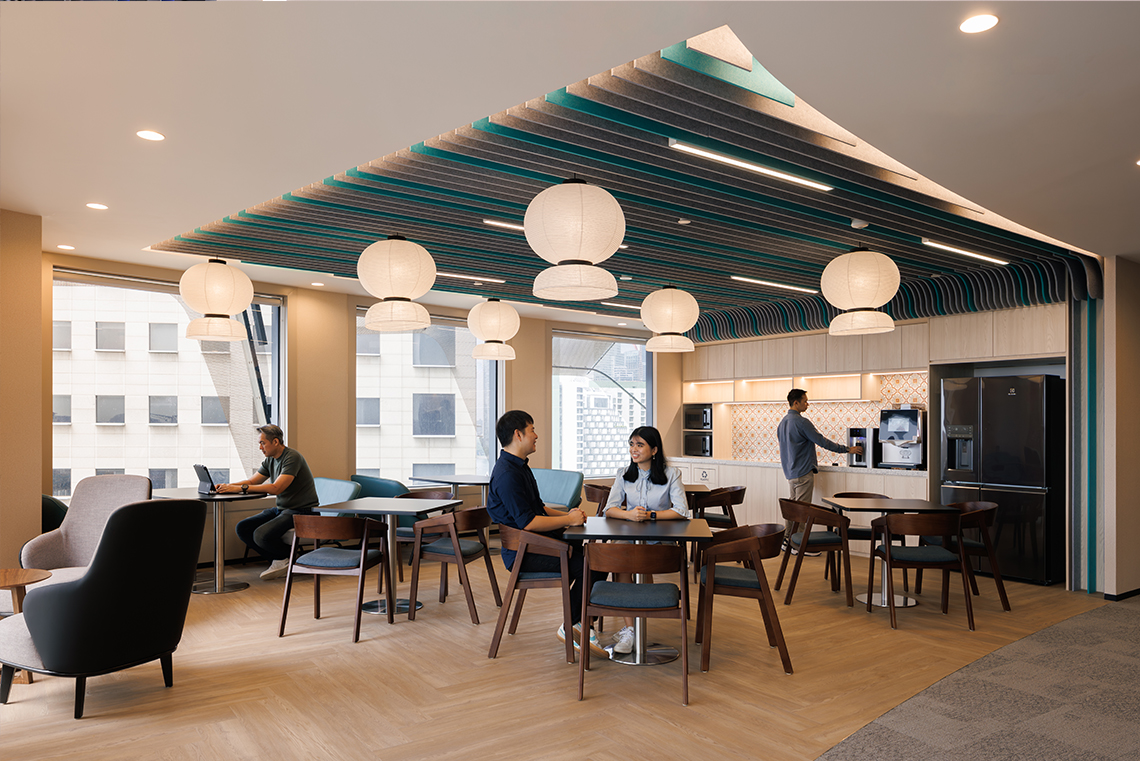 Leading Global Energy Group
When considering office refurbishment vs office relocation and choosing the one suitable for your business, consider how these disruptions can affect your work. Whether you decide to refurbish or relocate it will take some time to plan and manage it which might reduce office productivity as the team takes up this work on priority. This will reflect on the performance of any ongoing projects and you have to make adjustments.
If you are only fixing office design issues like making aesthetic changes or rearranging furniture, the refurbishment can be completed in hours or at best in a day or two without much disruption. However, if you are going for a complete office rebuilding involving office space planning and restructuring it will take months.
Compared to that, office relocations will take more time as you have to go through an extensive process of selecting locations, negotiating and signing lease contracts for the new office and also ensuring that your business is compliant with regulations related to the property. The employees will also need extra time to adjust to the new office and location. However, while the work is a lot more time-consuming, your projects can still run on time as the workers can work from the old office with less disruptions.
In the long-term, an office relocation has many more benefits than refurbishment due to the overall changes it can make in the future. It might seem more disruptive because of the additional planning and workload the staff has to endure but in the long run, it is beneficial as you can take your business to new heights in a strategic location highly accessible to clients, customers and employees.
Leading Global Energy Group
When considering office refurbishment vs office relocation and choosing the one suitable for your business, consider how these disruptions can affect your work. Whether you decide to refurbish or relocate it will take some time to plan and manage it which might reduce office productivity as the team takes up this work on priority. This will reflect on the performance of any ongoing projects and you have to make adjustments.
If you are only fixing office design issues like making aesthetic changes or rearranging furniture, the refurbishment can be completed in hours or at best in a day or two without much disruption. However, if you are going for a complete office rebuilding involving office space planning and restructuring it will take months.
Compared to that, office relocations will take more time as you have to go through an extensive process of selecting locations, negotiating and signing lease contracts for the new office and also ensuring that your business is compliant with regulations related to the property. The employees will also need extra time to adjust to the new office and location. However, while the work is a lot more time-consuming, your projects can still run on time as the workers can work from the old office with less disruptions.
In the long-term, an office relocation has many more benefits than refurbishment due to the overall changes it can make in the future. It might seem more disruptive because of the additional planning and workload the staff has to endure but in the long run, it is beneficial as you can take your business to new heights in a strategic location highly accessible to clients, customers and employees.
Cost-Effectiveness
Another key aspect to consider in the stay-vs-go discussion is the cost-effectiveness of the project. Whether you can relocate or refurbish entirely depends on your company’s budget. If you are on a low budget then you cannot take the burden of office relocation costs of moving into a cutting-edge workspace. Meanwhile, office renovation costs offer a more cost-effective solution as you are using a lot of readily available resources like furniture and HVAC for office refurbishment. Apart from the cost of building a new office from scratch, relocation requires additional expenses like hiring consultants and legal experts to sign lease agreements and check compliance issues. Additionally, you also need to take the help of a packers and movers company to shift all the equipment into the new. Moreover, you need to compare your current lease rates with the ongoing market rates, to understand if you are getting a better deal when you are moving offices. Also, take into account the probability of development in the new area in case you shift business 10-20 years down the line, making you purchase the property and sell it in future. In short, you have to look at the return on the investment you are making for the new office. While moving to a new location might seem costly initially, it can turn out to be a good investment if it enhances productivity and lowers your operating costs. New offices with modern and efficient technology can reduce your business operations expenses significantly.Impact on Company Culture
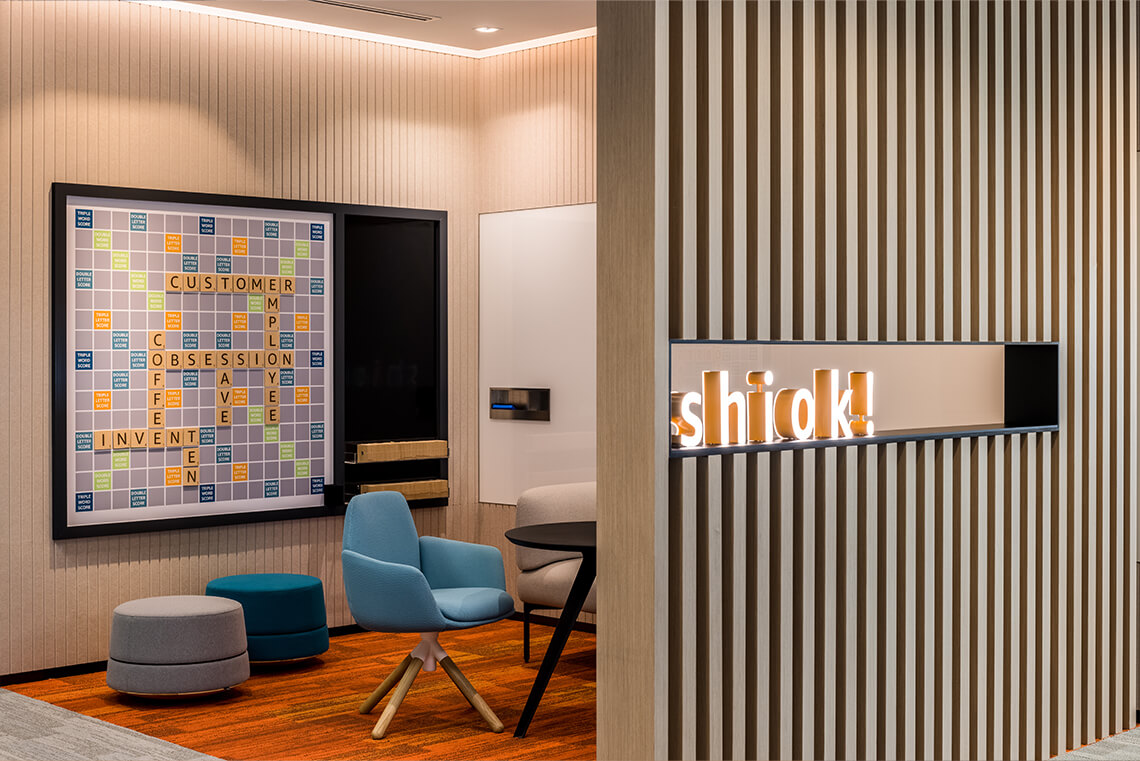 The workspace determines the company culture and hence you must consider this aspect before relocating or refurbishing the office. Workspaces can create a brand experience that reflects the brand value and identity as it takes care of employee well-being and resonates with the voice of the customers and clients. It can promote company culture by fostering better communication with increased collaboration space.
Your office space can seem like a tired and outdated space if it has not evolved with the brand and company culture. In such situations, the employees too seem exhausted and uninterested in work, making it suitable to go for an office refurbishment as it can freshen up the space without complicated relocation.
However, if you want a more detailed overhaul in the cultural perspective of the company then it is apt to relocate. Office relocation resets the company culture, especially for those businesses which have changed hands or undergone mergers and acquisitions. The new office can reflect those changes in the company by showcasing the ethos of the new owners or brands.
So, from the angle of company culture, refurbishing seems like a better option when it comes to setting the office refurbishment vs office relocation debate as it can provide a solution without much hassle. However, a brand new space can act as a makeover for the company, changing its business perspectives.
The workspace determines the company culture and hence you must consider this aspect before relocating or refurbishing the office. Workspaces can create a brand experience that reflects the brand value and identity as it takes care of employee well-being and resonates with the voice of the customers and clients. It can promote company culture by fostering better communication with increased collaboration space.
Your office space can seem like a tired and outdated space if it has not evolved with the brand and company culture. In such situations, the employees too seem exhausted and uninterested in work, making it suitable to go for an office refurbishment as it can freshen up the space without complicated relocation.
However, if you want a more detailed overhaul in the cultural perspective of the company then it is apt to relocate. Office relocation resets the company culture, especially for those businesses which have changed hands or undergone mergers and acquisitions. The new office can reflect those changes in the company by showcasing the ethos of the new owners or brands.
So, from the angle of company culture, refurbishing seems like a better option when it comes to setting the office refurbishment vs office relocation debate as it can provide a solution without much hassle. However, a brand new space can act as a makeover for the company, changing its business perspectives.
Talent Acquisition and Retention
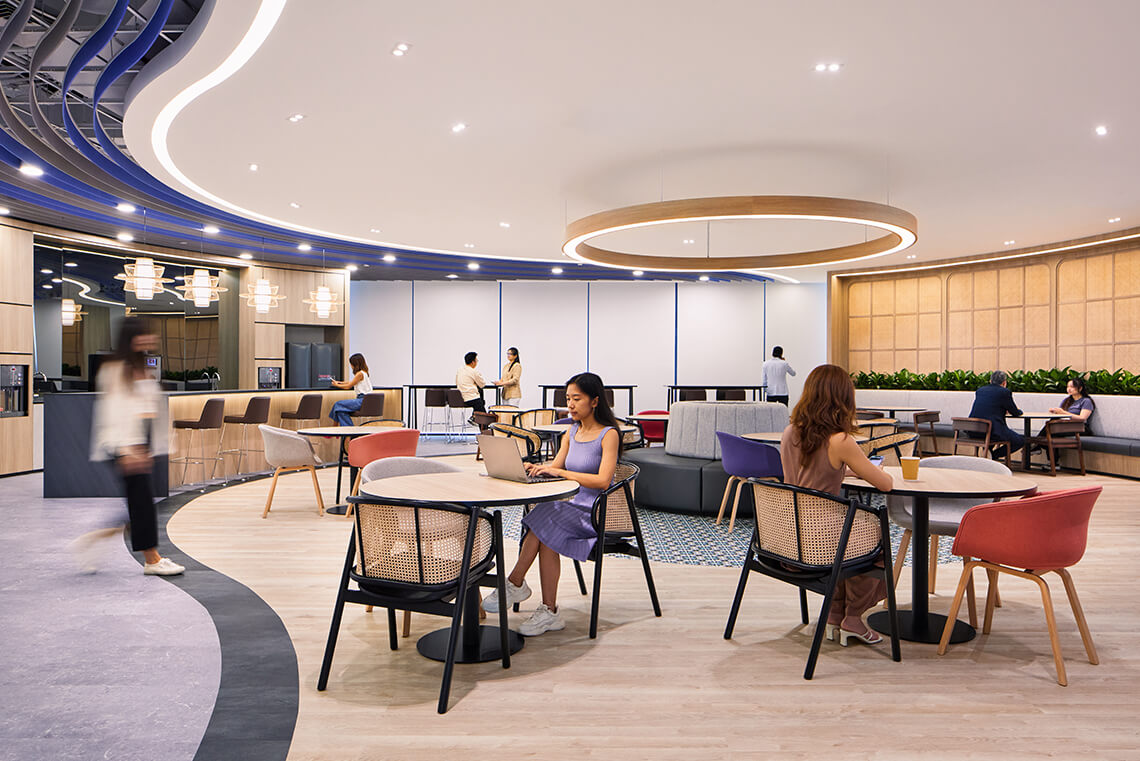 Suntory Beverage & Food
Last but not least is the question of whether relocation or refurbishment helps in retaining and attracting talent in the company. Talent acquisition and retention have been the primary concern for most CEOs worldwide for the last 3 years, as the COVID-19 pandemic made employees conscious of their work-life balance, making them opt for remote or hybrid work culture. This is going to intensify in the coming years as a flexible workspace becomes the norm.
If your workspace is not flexible enough and does not offer that much of a great work environment, then consider refurbishing it to incorporate changes. You can fully change the look and feel of the place with a new design and layout that promotes employee well-being and productivity.
However, despite all the changes to make the space more flexible and collaborative, an office refurbishment cannot eradicate the location-related issues. If the office is located in a difficult-to-access location and an ill-designed building that lacks modern amenities; then it is better to relocate to enhance employee experience and performance. Moreover, such a space can also harm your business prospects if you decide not to move offices.
Again in this scenario, the inclination is towards renovation instead of relocation because of the time and budget constraints but moving to a new location well-connected to different parts of the city helps the employees cut down on transport costs and also aligns the company to the centre of the business hub.
Suntory Beverage & Food
Last but not least is the question of whether relocation or refurbishment helps in retaining and attracting talent in the company. Talent acquisition and retention have been the primary concern for most CEOs worldwide for the last 3 years, as the COVID-19 pandemic made employees conscious of their work-life balance, making them opt for remote or hybrid work culture. This is going to intensify in the coming years as a flexible workspace becomes the norm.
If your workspace is not flexible enough and does not offer that much of a great work environment, then consider refurbishing it to incorporate changes. You can fully change the look and feel of the place with a new design and layout that promotes employee well-being and productivity.
However, despite all the changes to make the space more flexible and collaborative, an office refurbishment cannot eradicate the location-related issues. If the office is located in a difficult-to-access location and an ill-designed building that lacks modern amenities; then it is better to relocate to enhance employee experience and performance. Moreover, such a space can also harm your business prospects if you decide not to move offices.
Again in this scenario, the inclination is towards renovation instead of relocation because of the time and budget constraints but moving to a new location well-connected to different parts of the city helps the employees cut down on transport costs and also aligns the company to the centre of the business hub.
Summary
Summing up, we suggest that deciding on the office refurbishment vs office relocation is entirely up to the future business prospects of the company. This will define your lease costs for at least 5-10 years and have an impact on your talent attraction and retention capacity. If you plan it strategically and make the necessary changes it can expand your company’s growth as employee satisfaction, office productivity and office attendance levels are connected to it or otherwise. Through this article, we have shared critical insights on the advantages and disadvantages of both to help you make an informed decision.Elevate your workspace today!
Frequently Asked Questions
What is the main difference between office refurbishment and office relocation?
Office refurbishment involves adapting and updating your current space to meet your needs, which can range from simple furniture updates to complete overhauls. Office relocation means moving to an entirely new office space where you can build the workplace from scratch.
How do I decide whether to refurbish or relocate my office?
While deciding whether to refurbish the existing office or relocate to a new space you must consider different aspects of your workspace needs including space utilisation in the office, disruptions to business operations, cost-effectiveness of the measure, impact on talent acquisition and company culture. If all these needs can be accommodated by renovating your existing office space then go for redesigning instead of relocating.
What are the cost implications of office refurbishment vs. office relocation?
Office refurbishment is more cost-effective than relocation because it uses existing elements of your office. Relocation costs include finding a new space, negotiating a lease, and moving equipment, which makes it more expensive initially. However, if you want to reap the benefits of a modern cutting-edge workspace with up-to-date technology support that lowers daily operating costs, then relocating is a better option.
How does office refurbishment impact company culture?
Refurbishing your office can refresh the space and align it with your evolving brand and culture. It enhances the workspace without the added complexities of moving. However, relocation provides an opportunity for a culture reset, especially beneficial for companies that have recently merged.
How does office relocation affect employee productivity and disruption?
Relocation involves significant planning and can be disruptive, as employees need time to adjust to a new environment. However, the physical move can be less disruptive than a full refurbishment because employees can continue to work in the current office until the new space is ready.
What should I consider regarding space when deciding between refurbishment and relocation?
Assess both the quantity and quality of your current space. Overcrowding might suggest a need for more space, but often, optimising existing space can resolve issues. Evaluate if the current space can be adapted to your needs or if relocation is necessary for better space utilisation.

